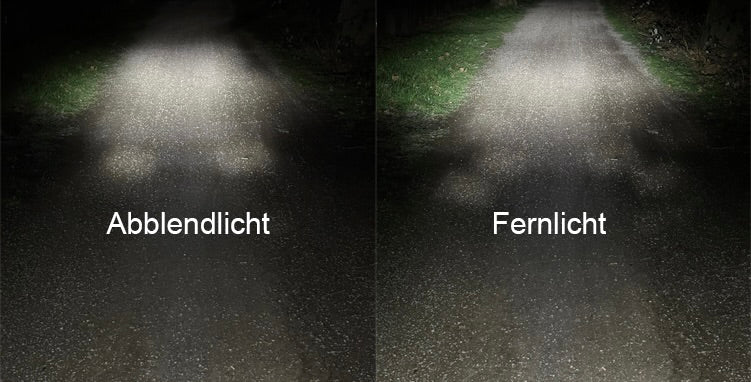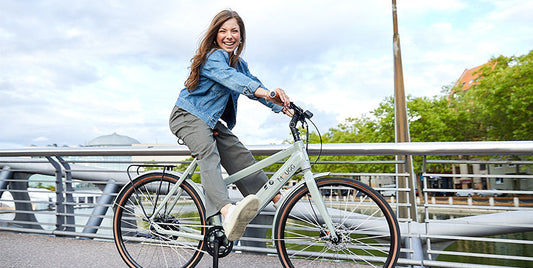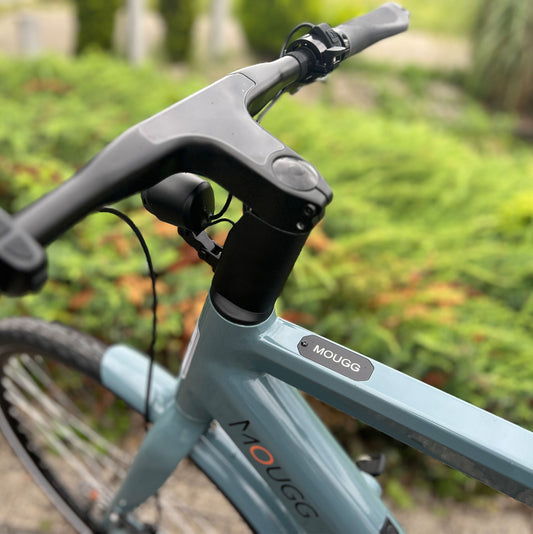
Was ist ein Fernlicht für Fahrräder und E-Bikes?
Share
Mehr zum Thema Scheinwerfer mit Fernlicht
Tipp: unsere Tipps zur Fahrradbeleuchtung
Ist Fernlicht am Fahrrad erlaubt? Was ist ein Fernlicht für Fahrrad und E-Bikes? Wann darf man Fernlicht nicht verwenden?
Viele kennen das Fernlicht wahrscheinlich von Autos, jedoch fährt man in der Regel mit Abblendlicht. Wenn es jedoch keine Gefährdung anderer Verkehrsteilnehmer gibt, kann das Fernlicht eingeschaltet werden, um die Sichtweite erheblich zu verbessern. Seit 2017 ist es gemäß § 67 Abs. 3 Satz 5 StVZO auch für Fahrräder zulässig, ein Fernlicht zu verwenden, solange es in einen zugelassenen, abgeblendeten Fahrradscheinwerfer integriert ist.
Wie funktioniert ein Fernlicht? Im Gegensatz zum Abblendlicht hat das Fernlicht keine klare Hell-Dunkel-Grenze und leuchtet weiter nach oben, was die Sichtweite erhöht. Um andere Verkehrsteilnehmer nicht zu blenden, wird das Fernlicht in einen zugelassenen, abgeblendeten Fahrradscheinwerfer integriert. Die Neigung des Scheinwerfers wird so eingestellt, dass die Hell-Dunkel-Grenze nach unten abfällt und eine Blendung anderer Verkehrsteilnehmer vermieden wird. Das Fernlicht darf nur bei ausreichender Sichtweite und wenn keine Blendung anderer Verkehrsteilnehmer zu erwarten ist, eingeschaltet werden.

Was ist der Unterschied zwischen Fernlicht und Abblendlicht?
Das Abblendlicht ist so konstruiert, dass es eine klare Hell-Dunkel-Grenze hat und keine Blendung verursacht. Im Gegensatz dazu leuchtet ein Fernlicht weiter nach oben und erhöht dadurch die Sichtweite.
In der Regel wird ein Fernlicht bei Fahrradscheinwerfern durch zusätzliche LEDs im Gehäuse realisiert. Diese befinden sich in einer etwas anderen Position im Reflektor und leuchten so das Licht weiter nach oben. Üblicherweise wird das Fernlicht über einen Lenkertaster aktiviert, sodass es bei Bedarf schnell ein- und ausgeschaltet werden kann, insbesondere wenn andere Verkehrsteilnehmer in der Nähe sind.
Wann soll man Fernlicht verwenden?
Als Fahrrad- oder Elektroradfahrer ist es von besonderer Bedeutung, bei Dunkelheit über eine funktionierende Beleuchtung zu verfügen - nicht nur aus rechtlicher Sicht, sondern vor allem um Ihre eigene Sicherheit zu gewährleisten. Im Folgenden finden Sie hilfreiche Tipps, worauf Sie bei der Beleuchtung achten sollten.





